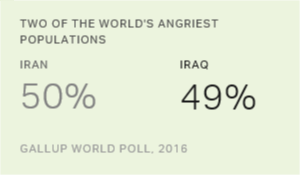Since the Arab Spring, the economic and political institutions in Middle Eastern countries have undergone a transformation. But how has this profound transformation affected people's lives and their social, economic and political preferences?
Answering this question is important because personal experiences largely determine whether people support (and continue to support) the economic and political institutions that underpin their society.
To monitor how this transformative process affects people's perceptions and attitudes, the European Bank for Reconstruction and Development (EBRD) publishes assessments for its countries of operation in the southeastern Mediterranean region (SEMED): Egypt, Jordan, Morocco and Tunisia.* This piece highlights three core messages from the most recent assessments, which are based on data from the 2015 .
This analysis gives a clearer perspective on the remaining challenges facing the SEMED region. The reveal several important developments:
1. People in SEMED are more optimistic about future economic conditions than their current situations.
Table 1 reveals that, on average, only 15% of respondents in the SEMED region live comfortably on their present income, compared with 17% in the transition region and 36% in advanced market economies in Western Europe. On the brighter side, people are optimistic about future economic conditions. For example, although attitudes vary within the region, 44% of respondents on average believed that the economic situation in their country was improving at the time of the survey. Similarly, 35% of people thought that the economic situation in their area or city was improving. Satisfaction with job opportunities stands at 27%, which is lower than the average for Western Europe (34%), but slightly higher than the average for the transition region (25%).
| Egypt | Jordan | Morocco | Tunisia | Transition region* | Western Europe* | ||||||||||||||||||||||||||||||||||||||||||||||||||||||||||||||||||||||||||||||||||||||||||||||
|---|---|---|---|---|---|---|---|---|---|---|---|---|---|---|---|---|---|---|---|---|---|---|---|---|---|---|---|---|---|---|---|---|---|---|---|---|---|---|---|---|---|---|---|---|---|---|---|---|---|---|---|---|---|---|---|---|---|---|---|---|---|---|---|---|---|---|---|---|---|---|---|---|---|---|---|---|---|---|---|---|---|---|---|---|---|---|---|---|---|---|---|---|---|---|---|---|---|---|---|
| % | % | % | % | % | % | ||||||||||||||||||||||||||||||||||||||||||||||||||||||||||||||||||||||||||||||||||||||||||||||
| Economic situation good or excellent | 34 | 29 | 34 | 13 | 22 | 34 | |||||||||||||||||||||||||||||||||||||||||||||||||||||||||||||||||||||||||||||||||||||||||||||
| Economic situation in the country improving | 64 | 31 | 67 | 17 | 29 | 36 | |||||||||||||||||||||||||||||||||||||||||||||||||||||||||||||||||||||||||||||||||||||||||||||
| Economic situation in the area or city improving | 39 | 38 | 42 | 21 | 32 | 35 | |||||||||||||||||||||||||||||||||||||||||||||||||||||||||||||||||||||||||||||||||||||||||||||
| Good time to find a job | 34 | 35 | 19 | 21 | 25 | 34 | |||||||||||||||||||||||||||||||||||||||||||||||||||||||||||||||||||||||||||||||||||||||||||||
| Comfortable living on present income | 14 | 8 | 20 | 17 | 17 | 36 | |||||||||||||||||||||||||||||||||||||||||||||||||||||||||||||||||||||||||||||||||||||||||||||
| The Â鶹´«Ã½AV data allow us to benchmark the SEMED region against Emerging Europe (the "transition region") and some advanced market economies (France, Germany, Italy, Sweden and the United Kingdom). The "transition region" consists of Central Asia (Kazakhstan, Kyrgyzstan, Mongolia, Tajikistan, Turkmenistan and Uzbekistan); Central Europe and the Baltic states (Croatia, Estonia, Hungary, Latvia, Lithuania, Poland, Slovakia and Slovenia); Eastern Europe and the Caucasus (Armenia, Azerbaijan, Belarus, Georgia, Moldova and Ukraine); Russia; Southeastern Europe (Albania, Bosnia and Herzegovina, Bulgaria, Cyprus, Macedonia, Greece, Kosovo, Montenegro, Romania and Serbia); and Turkey. *Numerical averages of country-weighted averages | |||||||||||||||||||||||||||||||||||||||||||||||||||||||||||||||||||||||||||||||||||||||||||||||||||
| Â鶹´«Ã½AV, 2015 | |||||||||||||||||||||||||||||||||||||||||||||||||||||||||||||||||||||||||||||||||||||||||||||||||||
2. Satisfaction with infrastructure remains low in the SEMED region.
Satisfaction levels with specific aspects of infrastructure and services are relatively low in the region (Figure 1). The quality of water receives the most favorable ratings, with 59% of the respondents, on average, reporting to be satisfied. Similarly, 55% of respondents were satisfied with public transportation. Satisfaction with healthcare services sits at 44%, which is substantially lower than the average for Western Europe (75%). Lastly, access to the internet at home varies substantially across countries (Figure 2). Access to the internet is especially low among those who live in rural areas as opposed to urban areas. On average, the figures for the SEMED region are about 50 percentage points lower than those of Western Europe.


3. Civic engagement remains limited in the region.
Â鶹´«Ã½AV assesses respondents' inclination to volunteer their time and assistance to others to measure people's engagement with their community. As Figure 3 illustrates, 55% of people in the SEMED region report helping a stranger in the month prior to the survey. This figure is above the two regional averages: the transition region (42%) and Western Europe (51%). But when it comes to donating money to a charity (14%) and volunteering their time to an organization (9%), people in the SEMED region are less engaged than their counterparts in the transition region and Western Europe.

This only scratches the surface of the findings from the Â鶹´«Ã½AV World Poll. More research will be conducted based on the Â鶹´«Ã½AV World Poll, which will yield further insights into the impact of economic and political reforms on people's beliefs and attitudes.
The full report is freely and publicly available to read at:
*Lebanon became an EBRD country of operation in mid-2017 and is hence not part of the most recent assessment round. The EBRD also started working in West Bank and Gaza in 2017 and hence West Bank and Gaza is also not included in these assessments.


